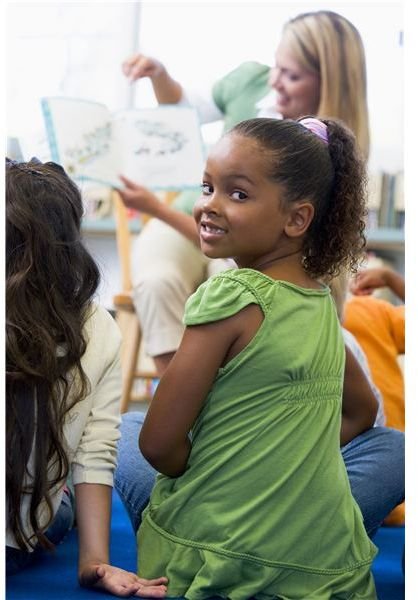Basic Special Education Classroom Rules That Lead to Positive Outcomes
Set Boundaries
Children prefer limits. They may not always agree with this statement if you ask them directly, but they learn better and contribute more
successfully in classrooms where expectations are communicated clearly. This is especially true for exceptional students. Students with learning issues, communication difficulties or behavior concerns require educators with proactive rather than reactive classroom management styles. When basic special education classroom rules are put in place at the beginning of the year, challenging behavior will be reduced and students will be ready to learn.
Involve Students
When students participate in the development of classroom rules, they are more likely to take ownership. One way of creating a list of rules for the special education classroom is to brainstorm, allowing students to suggest potential rules to the group. At first, accept all contributions. Later, rules can be categorized and narrowed down while discussing reasons for omission and inclusion. When student contributions are valued, children will become personally invested and be more likely to abide by the rules they have played a part in creating. Remember to communicate rules to families too, so they can be reviewed at home which will increase consistency and follow-through.
Examples of Basic Classroom Rules
The classroom rules you choose will vary according to grade level and cognitive ability of students. They may also differ teacher to teacher, according to teaching styles and personal preferences. The dynamics may also change when students play a role in rule development. If you are a beginning teacher, you may wish to experiment but try to limit the number of times you change expectations for students with special needs. Consistency is key. Remember to use clear and simple language and vocabulary at a level your students can understand. Keep your list at three to five rules so they will be easy for students to remember. Here is an example:
1. Respect your classmates.
2. Be prepared.
3. Pay attention when others are talking.
4. Always try your best.
Many students can easily understand a list like this. Some will need to have rules broken down into smaller, more manageable steps. Others will need to have vocabulary explained. A more specific list might look like this:
1. Keep hands and feet to yourself.
2. Bring homework, pens and pencils.
3. Look and listen when others talk.
4. Try your best.
No matter how the rules are worded, most students will need to hear and see examples of the rules in practice to understand them clearly.
Rehearse and Role Play
When you have finished creating your list of rules, consider adding visual supports. Drawings or photographs can really help increase comprehension for students who do not read or have difficulty processing language. Discuss examples of compliance and non-compliance for each rule and talk about positive and negative consequences. Make sure students know what to expect when they choose to follow or not follow the rules that have been established. Allow students to have repeated opportunities for practice. You could make this really fun by having the children create videos to share with other classes in the school.
Post your rules and refer to them regularly. Try not to fall into the trap of leaving them on the wall, in the back corner of the class, never to be looked at again. If students seem to be having trouble following the rules, reflect on your own behavior. Have you been referring to them less often? Do you need to engage in more positive reinforcement? Often, a quick review will be the prompt that students need to get back on track.
Promote Positive Classroom Interactions
Emphasizing the positive is much more effective than focusing on the negative for students with special needs. These students need clarity, structure, demonstration, repetition and affirmation. Having basic special education classroom rules is an effective component of great classroom management for exceptional learners. Be clear about what you want to see and provide positive reinforcement when you see it. Such reinforcement may take the form of simple words of encouragement or it may be the implementation of a token reward system, but the idea is the same, either way.
Engage in affirmative interactions with students at least four times more often than negative ones. For example, identify positive behavior, encourage good work habits and recognize academic improvement much more often than you scold or dole out consequences for poor behavior. This may seem like it should be second nature for most educators, but the reality is that many teachers think first about punishment. When educators use positive approaches with students as often as possible, they are effectively modeling desirable behavior for students. When they acknowledge these desirable behaviors in students, the likelihood of repetition is increased and a positive classroom environment is maintained.
References
Elizabeth Hardman & Steven Smith. “Promoting positive interactions in the classroom”, Intervention in School & Clinic; January 1999.
Douglas E. Kostewicz, et al. “Creating Classroom Rules for Students with Emotional and Behavioral Disorders: A Decision-Making Guide”, Beyond Behavior; Spring 2008.
